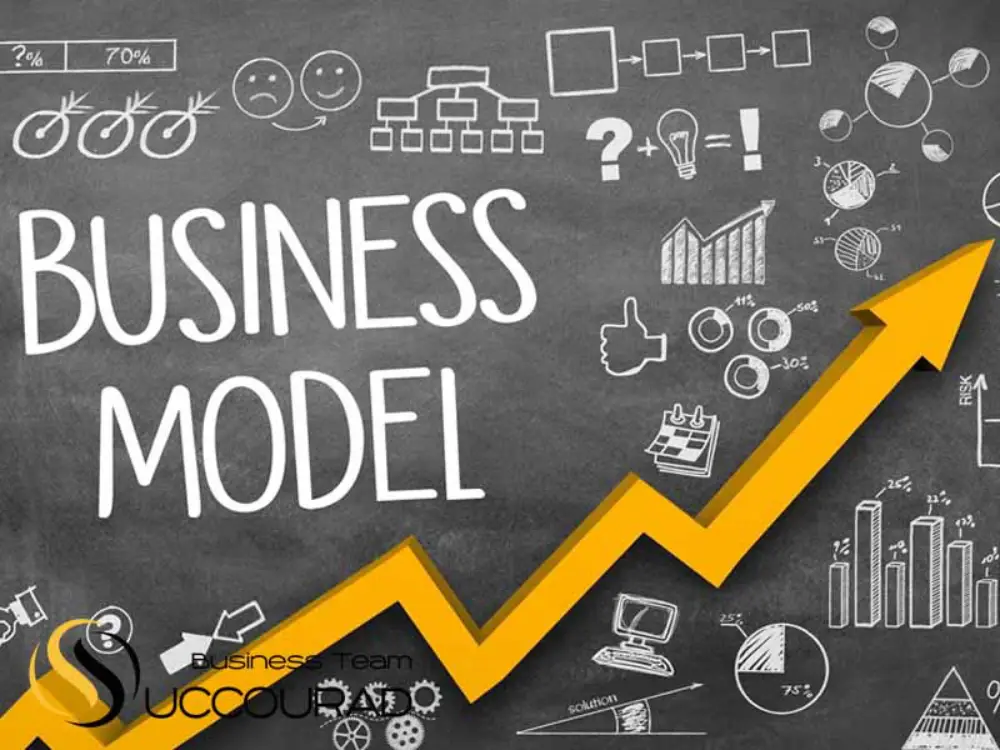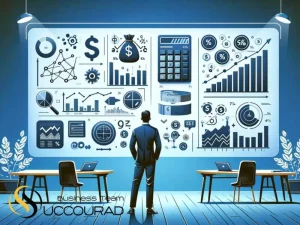Where Will You Find Your Next Great Idea?
While I love seeing my own great idea take off, I’m even more excited by the prospect of helping develop a universal formula for success.

A business model describes the rationale of how an organization creates, delivers, and captures value, in economic, social, cultural or other contexts. The process of business model construction and modification is also called business model innovation and forms a part of business strategy.
In theory and practice, the term business model is used for a broad range of informal and formal descriptions to represent core aspects of a business, including purpose, business process, target customers, offerings, strategies, infrastructure, organizational structures, sourcing, trading practices, and operational processes and policies including culture.
Your prototype might be ready for presenting to investors or licensees but it is worth nothing if you do not have a business model in place. How are you going to explain to anyone what your product does/intends to do and how it is going to add/create value for customers as well as the company?
A Business Model is a conceptual structure that supports the viability of a product or company and explains how the company operates, makes money, and how it intends to achieve its goals. All the business processes and policies that a company adopts and follows are part of the business model.
According to management guru Peter Drucker:
a business model is supposed to answer who your customer is, what value you can create/add for the customer and how you can do that at reasonable costs.
Thus a business model is a description of the rationale of how a company creates, delivers and captures value for itself as well as the customer.
The widespread use of business models came into existence with the advent of the personal computer which let people test and model the different components of a business. Successful business models before that were mostly created by accident and not by design. It’s different for business plans and business strategies though.
Every business model intrinsically has three parts –
There are different types of business models meant for different businesses. Some of the basic types of business models are:
A manufacturer makes finished products from raw materials. It may sell directly to the customers or sell it to a middleman i.e another business that sells it finally to the customer. Examples – Ford, 3M, General Electric.
A distributor buys products from manufacturers and resells them to the retailers or the public. Examples – Auto Dealerships.
A retailer sells directly to the public after purchasing the products from a distributor or wholesaler. Examples – Amazon, Tesco.
A franchise can be a manufacturer, distributor or retailer. Instead of creating a new product, the franchisee uses the parent business’s model and brand while paying royalties to it. Examples – McDonald’s, Pizza Hut.
Brick-and-mortar is a traditional business model where the retailers, wholesalers, and manufacturers deal with the customers face-to-face in an office, a shop, or a store that the business owns or rents.
E-Commerce business model is an upgradation of the traditional brick-and-mortar business model. It focuses on selling products by creating a web-store on the internet.
A company that has both an online and offline presence allows customers to pick up products from the physical stores while they can place the order online. This model gives flexibility to the business since it is present online for customers who live in areas where they do not have brick-and-mortar stores. Examples – Almost all apparel companies nowadays.
In this model, the basic product provided to the customers is very cost-sensitive and hence priced as low as possible. For every other service that comes with it, a certain amount is charged. Examples – All low-cost air carriers.
This is one of the most common business models on the Internet. Companies offer basic services to the customers for free while charging a certain premium for extra add-ons. So there will be multiple plans with various benefits for different customers. Generally, the basic service comes with certain restrictions or limitations, such as in-app advertisements, storage restrictions etc., which the premium plans shall not have. For example, the basic version of Dropbox comes with 2 GB storage. If you want to increase that limit, you can move to the Pro plan and pay a premium of $9.99 a month for it. Some online image editors allow you to edit only a certain number of images in the free basic plan while an unlimited number of images in the paid plan. Youtube’s free plan comes with ads while the premium (Red) plan has no ad interruption plus it has other benefits too. This model is one of the most adopted models for online companies because it is not only a great marketing tool but also a cost-effective way to scale up and attract new users.
If customer acquisition costs are high, this business model might be the most suitable option. The subscription business model lets you keep customers over a long-term contract and get recurring revenues from them through repeat purchases. Examples – Netflix, Dollar Shave Club.
Aggregator business model is a recently developed model where the company various service providers of a niche and sell their services under its own brand. The money is earned as commissions. Examples – Uber, Airbnb, Oyo.
Online marketplaces aggregate different sellers into one platform who then compete with each other to provide the same product/service at competitive prices. The marketplace builds its brand over different factors like trust, free and/or on-time home delivery, quality sellers, etc. and earns commission on every sale carried on its platform. Examples – Amazon, Alibaba.
Advertisement business models are evolving even more with the rise of the demand for free products and services on the internet. Just like the earlier times, these business models are popular with media publishers like Youtube, Forbes, etc. where the information is provided for free but are accompanied with advertisements which are paid for by identified sponsors.
With the advent of the internet, there has been an increase in the amount of data generated upon the users’ activities over the internet. This has led to the advent of a new business model – the data licencing business model. Many companies like Twitter and Onesignal sell or licence the data of its users or users of users to third parties which then use the same for analysis, advertising, and other purposes.
An agency can be considered as a partner company which specialises in handling the non-core business activities like advertising, digital marketing, PR, ORM, etc. This company partners with several other companies that outsource their non-core tasks to them and is responsible to maintain privacy and efficiency in their work. Examples of such agencies are Ogilvy & Mathers, Dentsu Aegis Network, etc.
Affiliate marketing business model is a commission-based model where the affiliate builds its business around promoting a partner’s product and directs all its efforts to convince its followers and users to buy the same. In return, the affiliate gets a commission for every sale referred. An example of a business operating on affiliate marketing business model is lifewire.com.
Dropshipping is a type of e-commerce business model where the business owns no product or inventory but just a store. The actual product is sold by partner sellers who receive the order as soon as the store receives an order from the ultimate customer. These partner sellers then deliver the products directly to the customer.
Network marketing or multi-level marketing involves a pyramid structured network of people who sell a company’s products. The model runs on a commission basis where the participants are remunerated when –
Network marketing business model works on direct marketing and direct selling philosophy where there are no retail shops but the offerings are marketed to the target market directly by the participants. The market is tapped by making more and more people part of the pyramid structure where they make money by selling more goods and getting more people on board.
Crowdsourcing business model involves the users to contribute to the value provided. This business model is often combined with other business and revenue models to create an ultimate solution for the user and to earn money. Examples of businesses using the crowdsourcing business model are Wikipedia, reCAPTCHA, Duolingo, etc.
A P2P economy is a decentralized internet-based economy where two parties interact directly with each other to buy or sell goods or to conduct a transaction without the intervention of any third party. A P2P catalyst is a platform where these users meet. Examples of P2P platforms are Craigslist, OLX, Airbnb etc.
The Blockchain is an immutable, decentralized, digital ledger. It is a digital database that no one owns but anyone can contribute to. Many businesses are taking this decentralised route to develop their business models. Models based on blockchain are not owned or monitored by a single entity. Rather, they work on peer-to-peer interactions and record everything on a digital decentralized ledger.
Many companies have started offering their software, platform, and infrastructure as a service. The ‘as a service’ business model works on the principle of pay as you go where the customer pays for his usage of such software, platform, and infrastructure; he pays for what and how many features he has used and not for what he hasn’t.
The High Touch model is one which requires lots of human interaction. The relationship between the salesperson and the customer has a huge impact on the overall revenues of the company. The companies with this business model operate on trust and credibility. Examples – Hair salons, consulting firms.
The opposite of the High Touch model, the Low Touch model requires minimal human assistance or intervention in selling a product or service. Since as a company, you do not have to maintain a huge sales force, your costs decrease, though such companies also focus on improving technology to further reduce human intervention while making the customer experience better at the same time. Examples – Ikea, SurveyMonkey.
Of course, most companies do not operate on any one of these business models but rather on a combination of some. Like it is perfectly possible for you to be a Bricks-and-clicks Low Touch Retailer or a High Touch Subscription-Based Manufacturer. What business model you choose depends on your business needs and what value you want to create for your stakeholders. Next, we will see how to develop the perfect business model for your startup, so that the chances of your success are amplified.
Recommended Read : What is Entrepreneurial Coaching and how does it help you?
Understanding different business models is crucial for entrepreneurs seeking to establish a viable business strategy that meets market demands while ensuring profitability and sustainability.
While I love seeing my own great idea take off, I’m even more excited by the prospect of helping develop a universal formula for success.

As a coach, when I am asked about entrepreneurial coaching and its application, I try to answer that question simply with another question! Do you

Entrepreneurship of a big business is an activity to provide specific services or products to customers. Therefore, businesses can include a process of production, exchange,
Follow The Tutorials and Key Tips.

If you need an experienced and professional human resources coach,…
Follow News and Group Discounts.
Follow Trainings and Group Discounts
Forward-looking entrepreneurs and innovative businesses benefit from the latest knowledge and the bitter-and-sweet experiences of others for their growth.
We at “Succourad” after years of experience and providing various services at National, Regional, and International levels, relying on the latest knowledge and with the support of our experienced members, we are with you from the beginning to the end of setting up your business and its development at the worldwide level.
Until now, we have tried to provide all the services you need (Training, Coaching، Consulting، Mentoring, Translating، Acceleration, Digital Marketing، Hosting, Content Creation, Web-Design, SEO , etc.) 24 hours a day as soon as possible with highest level of quality & lowest cost .
Copyright ©2014 – All rights reserved “Dr. Ali Ghavami“.
